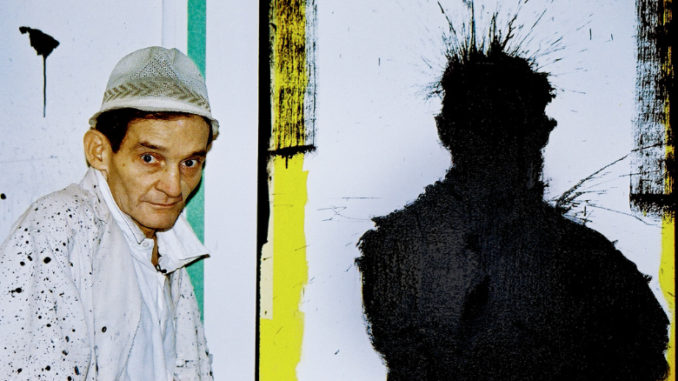
New York City’s prime time for street art began in the early ‘80s all over the gritty streets of the concrete jungle. Street artists, like Jean-Michel Basquiat and Keith Haring became NY legends, thanks to Andy Warhol and a mix of heroin, AIDS, and eventually death. One artist, however, became successful while still alive and made a come back to the art world of the Lower East Side.
“Shadowman,†a part of this year’s Tribeca Film Festival, is a documentary about Canadian-born and New York City’s art phenomena, Richard Hambleton and his journey from a discreet Lower East Side street artist of the late ‘70s, to a dysfunctional, homeless, drug-addicted art genius.
“Shadowman,” delivers emotional elements, from high to low. It tries to understand the concept of art and the struggle of an artist who feels misunderstood and dissociated with the outside world. The production process is beautifully shot by director Oren Jacoby (My Italian Secret; The Forgotten Heroes) and takes the viewer to a different time of New York City, unknown to the younger generation.
Hambleton rose to fame in the ‘80s, when the Lower East Side was a melting pot for artists, musicians, punks, social movements, and drugs. He was as popular and in high demand as Basquiat and Haring. However, Hambleton never wanted the fame and he disappeared as quickly as he appeared. In his attempt to avoid the mainstream, he found fame instead.
“Shadowman” represents the glitz and glamour within the grittiness of New York City, at a time of expressionism, rebellion, and lust for life and love to create art for people to see and feel. Hambleton was the underdog who made a name for himself in the NYC culture.
This started in 1977 when murders covered various urban cities in the U.S. and Hambleton created a series called Image Mass Murder. The controversial and eerie art method caught not just fear and disturbing feelings about New York City’s violent period, it also raised questions of who this guy was. His anonymity stirred up mass media coverage, that came with unexpected success because his art was so unique and mysterious, yet simple.
His signature style, which he called “public art,†appeared all over the NYC. Hambleton saw the city as his canvas, with opportunities endless. His Shadowman would be brought to life with the emotions and vibrant pulse of the city, at the hours of the early dawn, in unexpected places, giving society the chills of the unknown, but more so signs of awareness and precaution. It was an art of expression, that shows the care of the environment and society.
“Shadowman,†captures the fame of a charming, young artist, who lived for his art, not capitalism. But when heroin played a role in Hambleton’s life, his art was not enough as a drug to live for. In collaboration with various galleries and art dealers, his work progress got more complex and his ability to deliver was unreliable.
Hambleton still produces art on the Lower East Side, and it still leaves an impact on the New York City art scene, before Banksy came into the picture.

Leave a Reply